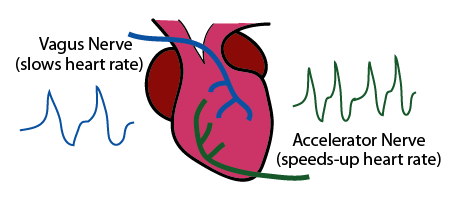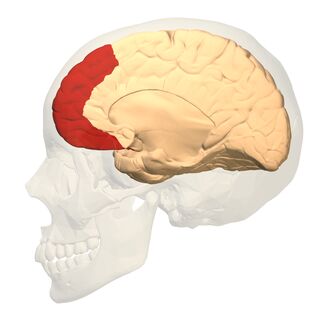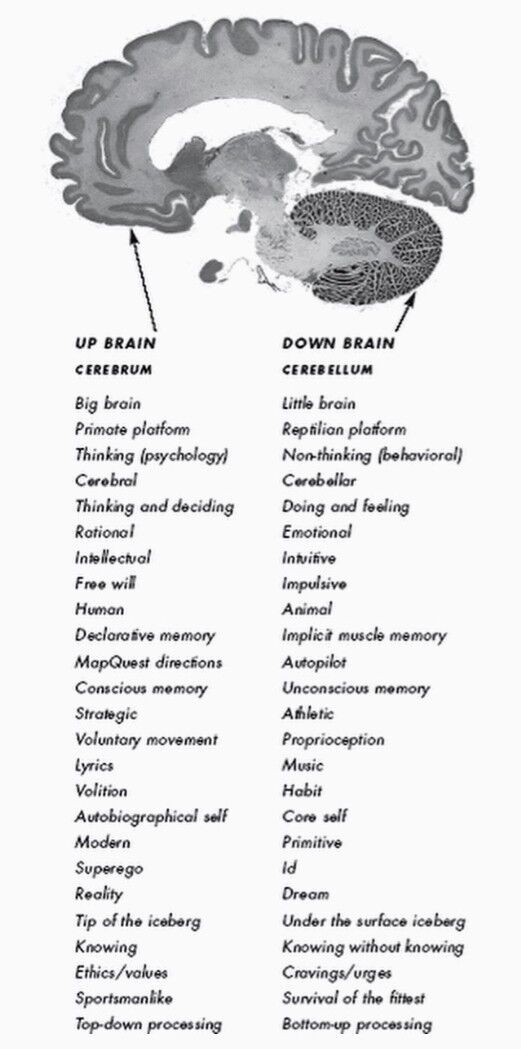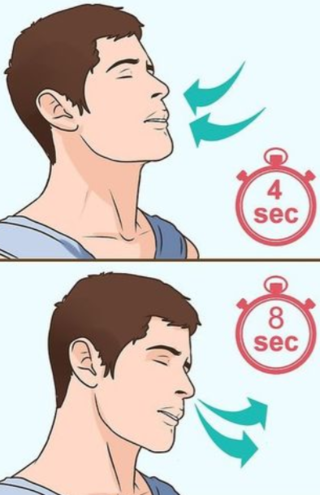Vagus Nerve
Need to Ace It? Hack Your Cerebellum & Vagus Nerve Like This
Hacking your "little brain" and squirting out "vagusstoff" can help you nail it.
Posted July 25, 2020 Reviewed by Kaja Perina

A few days ago, I did a podcast interview with someone who asked me to give listeners a crash course on how the cerebellum and vagus nerve work together to help someone create a "frictionless" state of flow and avoid overthinking both on and off the court.
In this blog post, I'm going to recap that conversation by tracing the "origin story" of my fascination with the cerebellum and vagus nerve. I'm also going to give you some actionable advice on how to optimize "little brain" functions and calm your nervous system by squirting out "vagusstoff" (vagus nerve substance) on demand.
In 1921, German physiologist Otto Loewi discovered that the vagus nerve squirts a calming, tranquilizer-like substance directly into cardiac muscle cell synapses and slows heart rate.

Loewi called this vagus nerve substance "vagusstoff" and won a Nobel Prize for his discovery. We know today that vagusstoff is actually acetylcholine and that the vagus nerve mediates the parasympathetic nervous system. This so-called "vagus nerve substance" helps to counteract "fight or flight" stress responses by calming the nervous system during the exhalation phase of the breathing cycle.
As a young tennis player, my father—who was a neurosurgeon, brain researcher, and my weekend tennis coach—coached me to take a deep, diaphragmatic belly breath followed by a long, slow exhale before every serve. Dad also taught me that squirting out some "vagusstoff" by exhaling slowly could instantly calm my nervous system; this increased my odds of serving an ace.

In 1504, Leonardo da Vinci made wax castings of the human brain and noticed that the cerebrum (Latin for "brain") was divided into two cerebral hemispheres that we colloquially refer to as "right brain-left brain" today. He also noticed two small, kumquat-shaped cerebellar hemispheres neatly tucked underneath the two cerebral hemispheres. Da Vinci called these smaller brain hemispheres the cerebellum (Latin for "little brain").
Centuries later, neuroscientists would learn that the left cerebellar hemisphere works with the right cerebral hemisphere to control the left side of the body and vice versa. We also know now that the cerebellum is responsible for coordinating fine-tuned muscle movements and that cerebellar Purkinje cells are key to implicit learning and hold muscle memory.
Every coordinated activity we learn to do automatically (e.g., riding a bike) without "thinking" relies on both hemispheres of the cerebellum creating fluid movements. One of the most common signs of cerebellar dysfunction is uncoordinated "jerky" movements and dysmetria. Conversely, having athletic prowess and "getting in the zone" requires having robust cerebellar functions and optimal functional connectivity between all four brain hemispheres.
"Unclamp, in a word, your intellectual and practical machinery, and let it run free; and the service it will do you will be twice as good." —William James (The Gospel of Relaxation, 1911)

My father was a huge William James fan and weaved some of his insights from "The Gospel of Relaxation" into my tennis lessons. From a neuroscientific perspective, when James says, 'Unclamp your intellectual machinery' my dad interpreted this to mean 'unclamp your prefrontal cortex' and let your cerebellum take the reins. This advice dovetails with my father's hypothesis that the key to avoiding what tennis legend Arthur Ashe called "paralysis by analysis" was to think less from your cerebral cortex and "trust your gut" more by tapping into the vagus nerve's bidirectional gut-brain axis.
One of the perks of having a father who was a neurosurgeon and neuroscientist was that he taught me things about the brain and my autonomic nervous system that helped me learn to "ace it" more frequently as a young tennis player. Later in life, this skillset helped me win races as an ultra-endurance athlete and to break a Guinness World Record.
After retiring from sports, I decided to reinvent myself as a writer. All of the neuroscience-based advice in my book The Athlete's Way was informed by my late father, Richard Bergland (1932-2007), who also published a book in 1986 called The Fabric of Mind.
For my first book, which was published in 2007, Dad and I created a hypothetical split-brain model we called "up brain-down brain." One goal of this framework was to take the emphasis off "left brain-right brain" and to help athletes optimize their sports performance by taking a two-pronged approach that addressed "up brain" (i.e., cerebrum) and "down brain" (i.e., cerebellum) from different angles. This illustration (below) from The Athlete's Way reflects the earliest incarnation of this split-brain model circa 2005.

Around 2009, I realized that the real key to peak performance was to optimize the functional connectivity between all four brain hemispheres. I drew the rudimentary "Super 8" brain map (below) using different colored Sharpie pens and highlighters to reflect my hypothesis that the key to creating flow may have something to do with reducing any "friction and viscosity" between the "thinking" cerebral hemispheres and the "non-thinking" cerebellar hemispheres. (See "Superfluidity and the Synergy of Your Four Brain Hemispheres")

As you can tell, I'm not much of an artist. That said, as someone who spends a lot of time writing, I know that the cerebellar skill of being able to type over 100 words a minute without looking at the keyboard allows cerebral thoughts to flow from my fingertips without overthinking the process. As might be expected, when I'm journaling, I find that my stream of consciousness narrative expressive writing flows better when I "unclamp" the intellectual machinery of my prefrontal cortex and let my thoughts run free.
Interestingly, a few years ago, researchers (Bourassa et al., 2017) found that narrative expressive writing appears to improve vagus nerve function and increase vagal tone as indexed by higher heart rate variability (HRV).

The vagus nerve plays a role in creating flow states because it regulates the parasympathetic nervous system and facilitates a relaxed psychological and physiological state. Any time I want to nudge myself into a state of flow, I start by taking a four-second inhale through my nose, followed by an eight-second exhale through pursed lips while relaxing the back of my eyes and repeat this cycle for about a minute. (See "Longer Exhalations Are an Easy Way to Hack Your Vagus Nerve")
Hopefully, some of these tips will increase your odds of "nailing it" the next time you face a challenge that requires peak performance or anytime you want to get in the zone.




